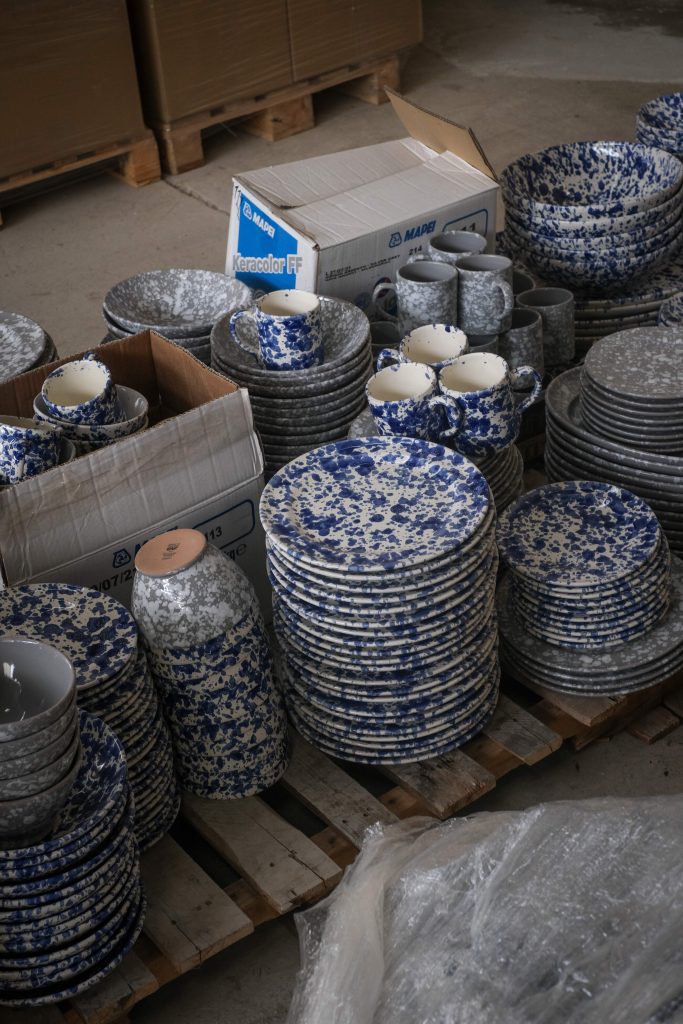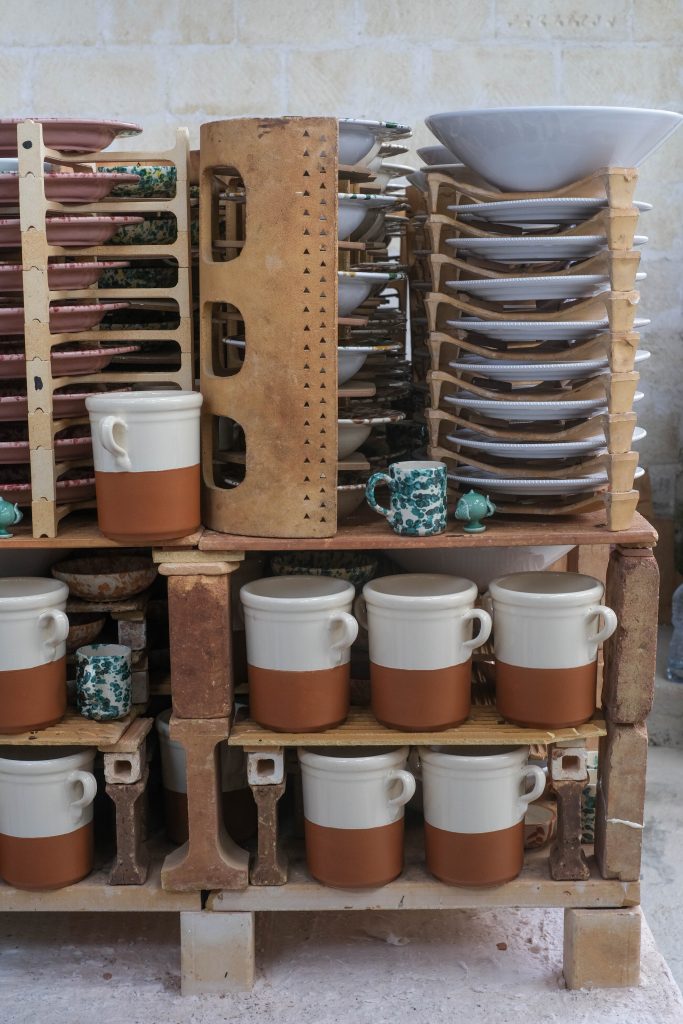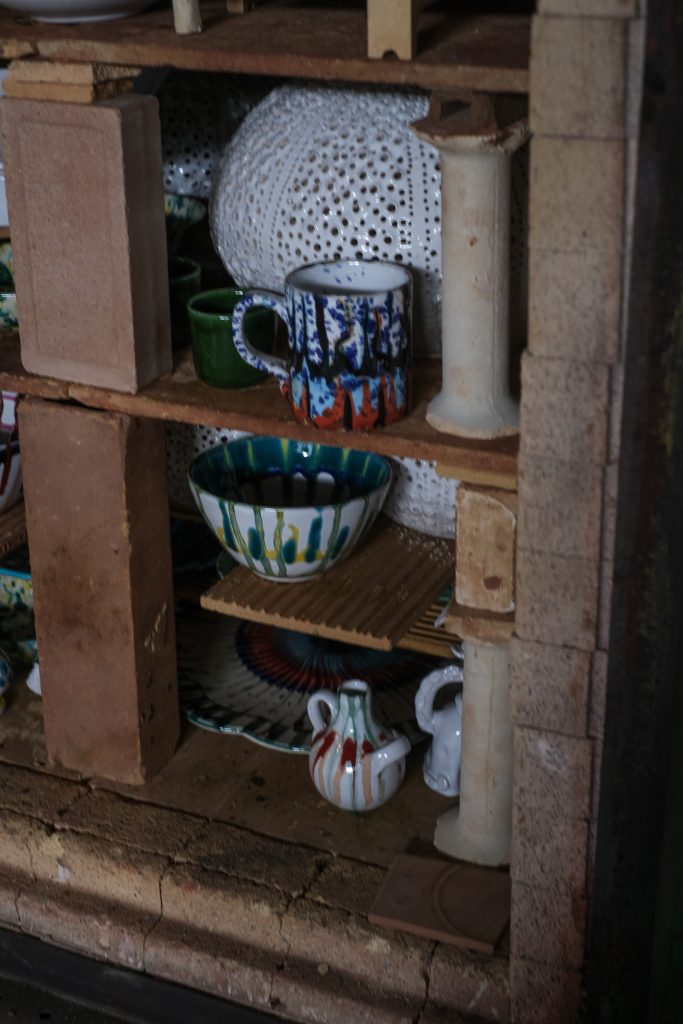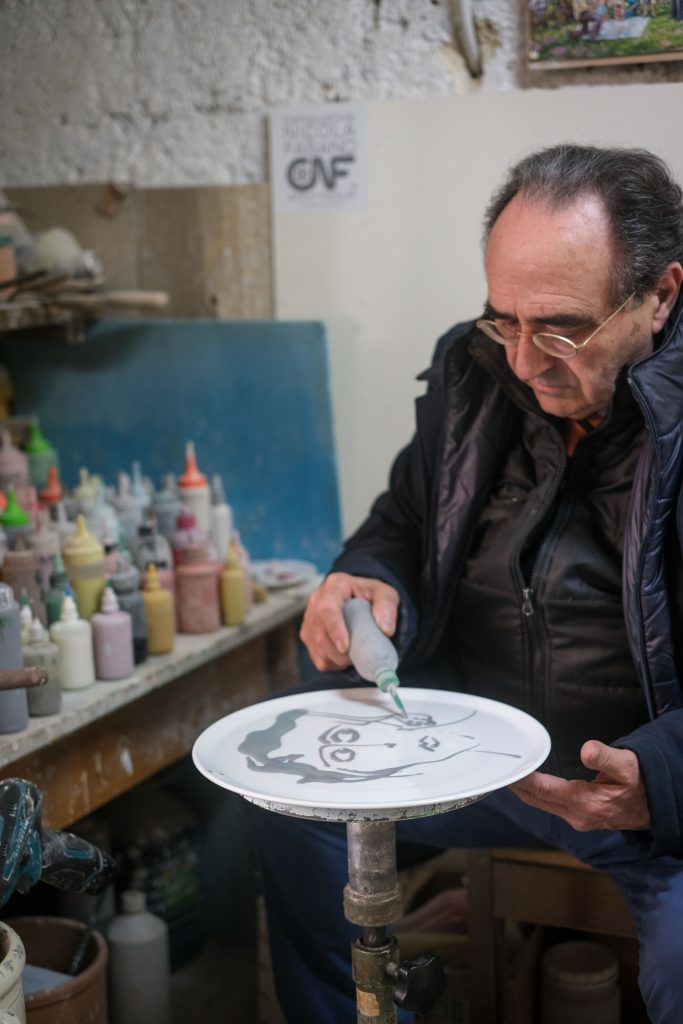Our ceramics are produced by Nicola Fasano Ceramiche in Grottaglie, which carries out the entire production cycle of artistic ceramics in-house, from the artistic conception to the final product.
The Nicola Fasano Company was officially founded in 1968 from the previous family business of which Nicola (1923-2009) “entrepreneur-ceramist” had been the manager since 1948. Before this date the company was managed by Francesco Fasano (1888-1962), “ceramist-potter” assisted by his six sons and, even before that, by his father Vincenzo (1844-1914), also a ceramist-potter-kiln worker.
Since 1623 there is news of a workshop of the forerunner of this brand, still a leader in the Apulian territory in the production of typical traditional ceramics, so-called ceramics of use, that is, artifacts used for the conservation of both liquid and solid foods, made in the “putea capasonara”. In the Faenza workshop instead, majolica for the table and the kitchen, household objects, tiles, etc. were produced as well as artistic majolica, intended for an upper-middle-class and/or aristocratic clientele. In that period the fiefdom of Taranto belonged to Gregorio Castelli, Duke of Genoa, acquired by the heirs of Isabella of Aragon. Following this character, some Ligurian ceramists steeped in the artistic culture of northern Europe moved there, including the skilled master Francisco Nicola Fasano who started his activity in a large cave entrusted to him by his illustrious patron, the location of which is still preserved.
All types of shapes of vases, plates, bowls, jugs and everything that was made for domestic use back then has been handed down from generation to generation until it finds validity today on the national and especially international markets. Many works made in this period are preserved in private collections and exhibited in national and foreign museums. Finds of the various types that highlight the characteristics of sobriety of the shapes, the expressive clarity of the decorations and the extraordinary executive elegance for the high technical-artistic level achieved by these masters.



